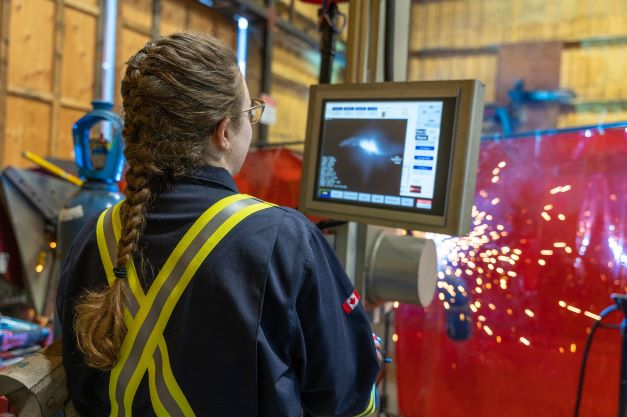By Mahyar Asadi, VP of Innovation, Novarc Technologies
Published By: TechGen Media
The following is an excerpt from this article
AI and “smartization” are changing the way the welding industry works
The industry is rapidly implementing welding automation systems. The number of installed industrial welding robots now stands at 400,000 units and is growing rapidly, with an additional 45,000 units being shipped annually. Automotive and transportation markets account for six out of every 10 units, with large robotic companies such as ABB, Yaskawa, Fanuc and Kuka supplying 50 percent of those units. (Asia represents 70 percent of the total arc welding market.)
But welding robots only provide the hardware; they lack the welding logic and cognition for practically meeting the requirements in welding applications. The next step forward, therefore, is an autonomous and adaptive welding solution that uses artificial intelligence (AI) and computer vision: Welding 4.0. This wave of robotic welding can address the shortage of highly skilled welders and dramatically improve the quality of end products.
The market for welding cobots is also expanding. Around 1,500 welding cobots are currently installed globally, but with more than 550 units shipped last year, this emerging technology platform is enjoying an annual growth rate of more than 30 percent with Universal Robots accounting for half the market share.
Smart demand
Companies such as Novarc Technologies are currently delivering pipe welding automation systems that enhance performance and productivity and allow fabrication shops to target bigger projects with improved delivery timelines, increased capacity and greater profit margins.
The Novarc spool welding robot (SWR), which is a cobot welder, allows a less-experienced operator to consistently produce high-quality welds and improve shop productivity while reducing the operator’s exposure to the health and safety risks inherent in the welding process.
AI allows the cobot to optimize highmix, low-volume manufacturing applications. Time-consuming and, at times, difficult programming is eliminated. Improved weld quality and throughput result in significantly reduced repair costs. In the case of SWR, customers have historically seen fabrication shop repair rates (typically 3 to 5 percent) dip down to less than 1 percent. The automation technology produces consistent, high-quality welds that improve every single time by machine learning from ongoing welding dynamics.
